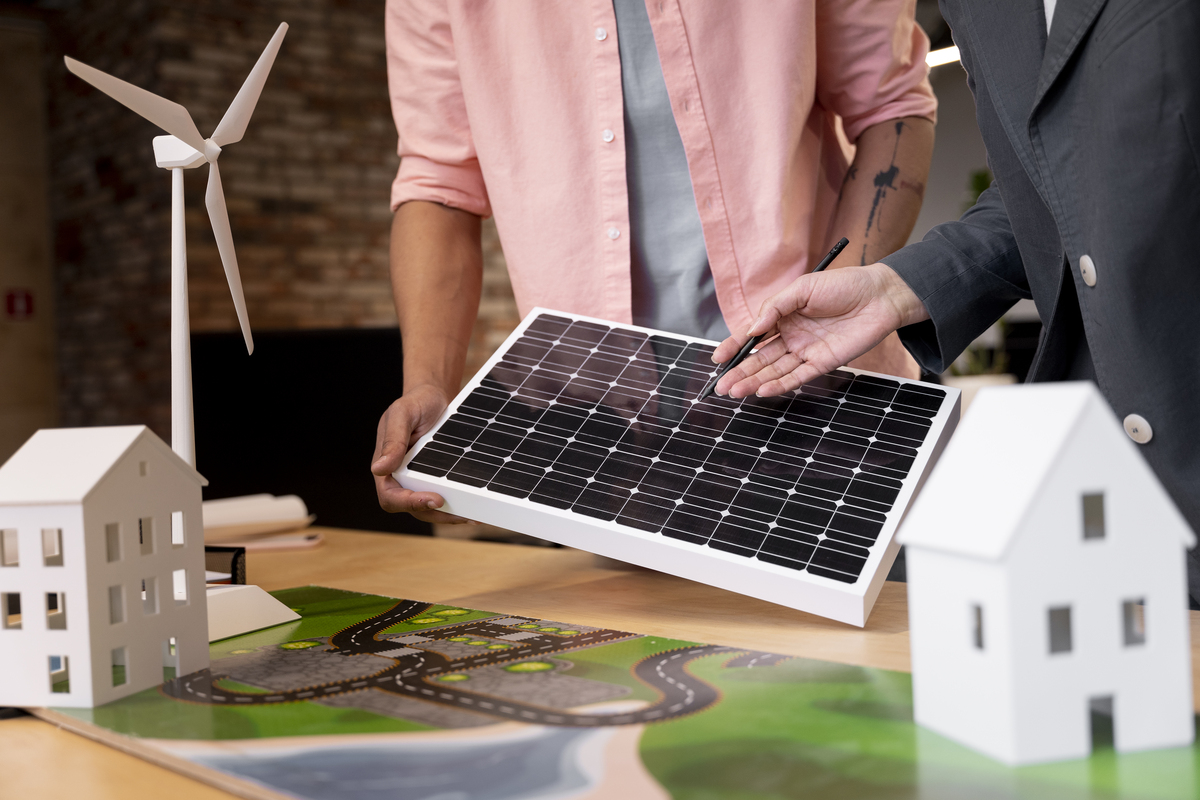The construction industry stands as a towering force shaping the modern world, yet its impact on the environment, society, and global economy is profound and often underestimated. Accounting for nearly 38% of global energy-related carbon dioxide emissions and utilizing around 40% of the world’s raw materials, construction is a critical contributor to resource depletion and environmental degradation.
In recent years, however, a transformative paradigm shift has emerged within this industry—one propelled by the adoption of Sustainable Development Goals (SDGs). These 17 interconnected goals, set by the United Nations to address global challenges by 2030, offer a blueprint for sustainable, inclusive, and resilient development across various sectors. In the context of construction, the significance of aligning with these goals is becoming increasingly apparent.
The urgency to mitigate environmental impact is unmistakable. With climate change escalating and natural resources dwindling, the construction industry faces an imperative to revolutionize its practices. Embracing Sustainable Development Goals in construction becomes not just a choice but a necessity, offering a structured framework to guide construction practices towards environmental stewardship and resource efficiency.
Beyond environmental concerns, Sustainable Development Goals in construction emphasize social equity and economic viability. They underscore the importance of fair labor practices, community engagement, and inclusive infrastructure development. This holistic approach aligns with the industry’s potential to not only build structures but also foster resilient communities and drive economic growth.
As the world looks towards sustainable development as a guiding principle, the integration of Sustainable Development Goals in construction holds promise. This convergence of global goals and construction practices marks a pivotal moment—an opportunity for the industry to transition towards a future where construction endeavors become pillars of sustainability, fostering a world that thrives environmentally, socially, and economically.
Table of Contents
Significance of Sustainable Development Goals in Construction
Sustainable Development Goals in construction hold immense significance, given the sector’s substantial impact on the environment, society, and the economy. Understanding this significance involves recognizing several key points:
Framework for Global Sustainability
- Universal Guidelines: Sustainable Development Goals in construction provide a universal framework adopted by nations worldwide to address pressing global challenges. In the construction industry, they offer a clear set of objectives to guide practices toward sustainable development.
- Comprehensive Approach: The 17 interconnected goals cover various dimensions, including environmental preservation, social equity, and economic growth. They encourage a holistic approach, emphasizing that sustainable development must consider multiple facets simultaneously.
Environmental Impact and Resource Conservation
- Resource Consumption: Construction activities are major consumers of raw materials, energy, and water, contributing significantly to resource depletion and environmental degradation. Sustainable Development Goals in construction, particularly goals like responsible consumption and production (SDG 12) and climate action (SDG 13), push the industry to adopt more resource-efficient and eco-friendly practices.
- Reducing Carbon Footprint: The construction sector is responsible for a considerable portion of global carbon emissions. Sustainable Development Goals in construction emphasize the need for sustainable cities and communities (SDG 11), encouraging the adoption of low-carbon materials, energy-efficient designs, and eco-friendly construction techniques to mitigate this impact.
Social and Economic Implications
- Social Responsibility: SDGs highlight the importance of social equity and inclusivity. In the construction industry, this translates to ensuring fair labor practices, promoting worker safety, and engaging with local communities affected by construction projects.
- Economic Viability: Sustainable construction practices aren’t just environmentally and socially responsible; they also enhance economic viability. Sustainable Development Goals in construction promote sustainable infrastructure development (SDG 9) that fosters long-term economic growth while minimizing negative environmental and social impacts.
Innovation and Collaboration
- Catalyst for Innovation: Pursuing Sustainable Development Goals in construction encourages innovation in materials, technologies, and methodologies. It drives the industry to explore sustainable building materials, renewable energy integration, and smart construction practices.
- Stakeholder Collaboration: Achieving Sustainable Development Goals in construction necessitates collaboration among diverse stakeholders—governments, businesses, NGOs, and communities. This collaboration fosters partnerships that drive sustainable initiatives, policies, and investments in construction.
Long-term Benefits and Global Relevance
- Long-Term Vision: Embracing Sustainable Development Goals in construction fosters resilience and future-proofing in construction. Building with sustainability in mind ensures structures and infrastructure that endure and adapt to changing environmental and societal needs.
- Global Relevance: The universality of SDGs means their principles apply universally, irrespective of geographical location or economic status, making them a potent driver for global change in the construction sector.
In summary, the significance of Sustainable Development Goals in construction lies in their ability to guide the industry toward more sustainable, resilient, and socially responsible practices, aligning its activities with broader global objectives for a better future. Achieving these goals necessitates collective action, innovation, and a concerted effort from all stakeholders involved in the construction ecosystem.

Sustainable Development Goals in Construction
Sustainable Development Goals in construction play a pivotal role in reshaping the industry, aligning its practices with broader global objectives for a sustainable future. Here’s how these goals intersect with the construction sector:
1. Affordable and Clean Energy (SDG 7)
- Renewable Energy Integration: Encouraging the adoption of renewable energy sources in construction projects to minimize reliance on fossil fuels. This includes solar panels, wind turbines, and geothermal systems.
The integration of renewable energy sources within construction projects stands as a cornerstone in the pursuit of Sustainable Development Goals in construction. Encouraging the adoption of renewable energy, including solar panels, wind turbines, and geothermal systems, signifies a pivotal shift away from fossil fuel reliance.
This transition not only reduces carbon emissions but also fosters energy independence and resilience in the construction sector. By embracing these innovative technologies, construction endeavors align with Sustainable Development Goals in construction, emphasizing affordable and clean energy solutions. This integration not only mitigates environmental impact but also drives economic growth, creating a pathway towards a more sustainable and environmentally conscious future within the construction industry.
2. Sustainable Cities and Communities (SDG 11)
- Urban Planning and Infrastructure: Promoting sustainable urban planning that emphasizes efficient land use, public transportation, green spaces, and resilient infrastructure to create livable cities.
- Affordable Housing: Developing affordable and sustainable housing solutions that meet environmental standards and accommodate growing urban populations.
In the realm of Sustainable Development Goals (SDGs), the construction industry’s role in shaping urban environments stands paramount. Embracing Sustainable Development Goals in construction means prioritizing sustainable urban planning, where efficient land utilization, accessible public transportation, expansive green spaces, and robust infrastructure converge to craft cities that are not just habitable but thrive sustainably.
Moreover, the pursuit of Sustainable Development Goals in construction resonates strongly in the realm of affordable housing. As urban populations burgeon, the challenge of providing homes that are both affordable and sustainable intensifies. Sustainable Development Goals in construction drive the construction sector toward innovative solutions, ensuring housing options that not only adhere to stringent environmental standards but also cater to the evolving needs of burgeoning urban communities.
By merging sustainability and affordability, the industry aims to create housing solutions that mitigate environmental impact while meeting the demand for adequate, accessible, and environmentally conscious housing, paving the way for inclusive and vibrant urban landscapes.
3. Responsible Consumption and Production (SDG 12)
- Material Efficiency: Encouraging eco-friendly and recycled materials, reducing waste generation, and implementing efficient construction practices to minimize environmental impact.
- Lifecycle Assessment: Considering the entire lifecycle of buildings, from construction to demolition, to reduce environmental footprints.
In the quest for sustainability within the construction realm, material efficiency serves as a pivotal focus. This involves a concerted effort to promote the use of eco-friendly and recycled materials, effectively curbing waste generation while embracing efficient construction methodologies. By advocating for the adoption of such materials and practices, the industry aims to significantly minimize its environmental footprint.
Moreover, integrating a lifecycle assessment approach stands as another crucial facet of Sustainable Development Goals in construction. This methodology involves a comprehensive evaluation that spans the entire lifecycle of buildings—from their initial construction phases to eventual demolition. By holistically analyzing each stage, from material extraction to disposal, this approach aims to identify opportunities for reducing environmental impacts.
It helps in making informed decisions, selecting materials and construction methods that not only serve immediate needs but also contribute to a long-term reduction in environmental footprints, enhancing the industry’s sustainability credentials. Embracing these strategies demonstrates a commitment to responsible construction practices that extend beyond immediate project completion, fostering a more environmentally conscious and sustainable construction landscape.
4. Climate Action (SDG 13)
- Reducing Carbon Footprint: Implementing low-carbon construction methods, optimizing energy efficiency, and designing buildings that mitigate climate change effects, such as extreme temperatures.
- Resilience to Climate Change: Constructing infrastructure that is resilient to the impacts of climate change, such as rising sea levels or increased frequency of extreme weather events.
In response to the pressing need to curb carbon emissions, the construction industry is increasingly embracing low-carbon methodologies, prioritizing energy efficiency, and revolutionizing building designs. These efforts aim to significantly reduce the industry’s carbon footprint, thereby contributing to global climate change mitigation strategies. By adopting innovative construction practices, such as utilizing sustainable materials, integrating renewable energy sources, and implementing green building certifications like LEED and BREEAM, construction projects strive to minimize environmental impact while enhancing energy efficiency.
Furthermore, the imperative to combat the escalating impacts of climate change has propelled a shift towards resilient infrastructure. Construction practices are evolving to construct buildings and infrastructure capable of withstanding the adverse effects of climate change, such as rising sea levels and the intensification of extreme weather events.
Implementing robust design and engineering measures ensures the durability and adaptability of structures, contributing to the resilience of communities in the face of climate-related challenges. Through these strategies, the construction industry is not only reducing its ecological footprint but also fortifying communities against the escalating impacts of a changing climate.

5. Industry, Innovation, and Infrastructure (SDG 9)
- Technological Advancements: Encouraging innovation in construction techniques, materials, and processes to create more sustainable and resilient infrastructure.
- Investment in Infrastructure: Developing sustainable infrastructure, including transportation, water, and energy systems that support economic growth while minimizing environmental impact.
The call for technological advancements in construction stands as a cornerstone in fostering sustainable and resilient infrastructure. Embracing innovation across construction techniques, materials, and processes is pivotal to redefining the industry’s landscape. This shift towards innovation holds the promise of creating more sustainable, eco-friendly, and durable structures that significantly reduce the industry’s environmental footprint.
Simultaneously, investing in Sustainable Development Goals in construction infrastructure remains a crucial avenue for progress. This entails the development of transportation networks, water management systems, and energy grids that not only propel economic growth but also operate harmoniously with the environment.
By prioritizing sustainability in infrastructure investments, such initiatives become catalysts for long-term progress, offering solutions that address societal needs while minimizing adverse environmental impacts. This dual focus on innovation and strategic investment not only elevates construction practices but also positions the industry as a driving force for positive environmental change.
6. Decent Work and Economic Growth (SDG 8)
- Fair Labor Practices: Ensuring safe working conditions, fair wages, and opportunities for skill development within the construction industry.
- Local Employment: Promoting local employment opportunities and supporting the communities where construction projects occur.
In the construction industry, championing fair labor practices stands as a cornerstone of development in Sustainable Development Goals in construction. This involves a commitment to ensuring safe working conditions, fair wages, and avenues for skill enhancement. By prioritizing the well-being and rights of workers, the industry not only fosters a more ethical working environment but also contributes to the overall social fabric.
Furthermore, promoting local employment opportunities represents a pivotal step in creating a positive impact on the communities where construction projects unfold. By actively engaging and hiring from the local workforce, the industry generates economic empowerment within these communities. This approach not only bolsters economic stability but also encourages social integration and community development.
Local employment initiatives not only provide job opportunities but also contribute to the cultivation of skills and expertise within the community. This strategy not only promotes a sense of ownership and pride but also ensures that the benefits of construction projects are felt locally, fostering a symbiotic relationship between the industry and the communities it serves. Ultimately, this emphasis on fair labor practices and local employment aligns construction practices with Sustainable Development Goals, emphasizing social responsibility and inclusive growth.
7. Life Below Water and Life on Land (SDGs 14 & 15)
- Biodiversity and Ecosystem Preservation: Implementing construction practices that protect and promote biodiversity, minimize habitat destruction, and conserve natural resources.
In the realm of construction, embracing Sustainable Development Goals (SDGs) involves a pivotal commitment to preserving biodiversity and ecosystems. This commitment extends beyond erecting structures; it encompasses safeguarding natural habitats and conserving invaluable resources. Through conscientious construction practices, such as minimizing habitat destruction and promoting biodiversity-friendly approaches, the industry endeavors to leave a positive environmental footprint. By integrating SDGs, construction projects prioritize the preservation of ecosystems, ensuring minimal disruption to the delicate balance of nature. The focus shifts towards utilizing sustainable materials, reducing ecological impact, and actively contributing to the conservation of natural resources. This approach not only enhances environmental sustainability but also fosters a harmonious coexistence between construction endeavors and the intricate ecosystems they inhabit, laying the foundation for a more ecologically resilient future.
8. Partnerships for the Goals (SDG 17)
- Collaboration and Cooperation: Encouraging partnerships between governments, businesses, civil society, and communities to work towards sustainable development in construction collectively.
Encouraging collaboration and cooperation stands as a cornerstone for sustainable development in construction. It entails forging robust partnerships among governments, businesses, civil society, and local communities to collectively steer the industry towards sustainable practices. By fostering these alliances, a harmonized effort emerges, leveraging diverse expertise, resources, and perspectives.
Governments play a pivotal role in setting policies and regulations conducive to Sustainable Development Goals in construction. Businesses drive innovation and investment, implementing eco-friendly practices. Civil society offers insights, advocacy, and community engagement, ensuring projects meet societal needs. Meanwhile, local communities provide valuable insights into their specific needs and concerns.
This collaborative approach transcends individual interests, creating a shared responsibility towards sustainable development. Through joint initiatives, knowledge sharing, and concerted action, these diverse stakeholders can propel the construction industry toward a future where sustainability is not just an aspiration but a collective commitment to a better, more resilient world.
Integrating these goals into construction practices is essential for creating buildings, infrastructure, and cities that are environmentally friendly, socially equitable, and economically viable. It requires a holistic approach, collaboration among stakeholders, innovative solutions, and a commitment to long-term sustainability.

Alignment of Construction Practices with SDGs
Aligning construction practices with Sustainable Development Goals in construction is crucial for fostering sustainable, responsible, and impactful development within the industry. This alignment involves several key aspects:
Goal Integration and Awareness
- Understanding SDGs: Construction stakeholders need to comprehend the specific Sustainable Development Goals in construction and their relevance to the industry. This involves raising awareness about the goals, their interconnectedness, and how construction practices can contribute to their attainment.
- Goal Prioritization: Identifying which sustainable Development Goals in construction are most pertinent to the construction sector based on their environmental, social, and economic impacts. For instance, goals related to sustainable cities (SDG 11), responsible consumption (SDG 12), climate action (SDG 13), and industry innovation (SDG 9) are often central to construction alignment efforts.
Environmental Sustainability
- Green Building Practices: Promoting sustainable construction materials, energy-efficient designs, and green building certifications (LEED, BREEAM, etc.) aligns with goals related to clean water and sanitation (SDG 6), affordable and clean energy (SDG 7), and sustainable cities (SDG 11).
- Waste Reduction: Adopting strategies to minimize construction waste and encourage recycling and reuse contributes to goals focused on responsible consumption (SDG 12) and sustainable production (SDG 9).
Social Responsibility
- Labor and Community Engagement: Ensuring fair labor practices, worker safety, and engaging with local communities affected by construction projects aligns with goals related to decent work and economic growth (SDG 8), industry, innovation, and infrastructure (SDG 9), and sustainable communities (SDG 11).
- Inclusivity: Building infrastructure that considers the needs of all, including marginalized groups, supports goals centered on reducing inequalities (SDG 10).
Economic Viability
- Investment in Sustainable Infrastructure: Developing infrastructure that is economically viable while minimizing environmental impact aligns with goals promoting sustainable cities (SDG 11) and industry innovation (SDG 9).
- Long-Term Cost Savings: Emphasizing life-cycle cost analysis and demonstrating the long-term financial benefits of sustainable construction practices supports goals related to sustainable consumption (SDG 12).
Monitoring and Reporting
- Measuring Impact: Establishing metrics and frameworks to track progress toward Sustainable Development Goals in construction within construction projects and reporting on these metrics transparently.
- Integration in Policies and Standards: Encouraging the incorporation of SDG principles into construction regulations, standards, and corporate policies.
Innovation and Collaboration
- Research and Development: Investing in research for innovative materials, construction techniques, and technologies that align with SDG objectives.
- Stakeholder Collaboration: Engaging various stakeholders—government bodies, construction companies, NGOs, communities—to collaborate on sustainable construction projects and initiatives.
Education and Training
- Building Capacity: Providing training and education programs for construction professionals to enhance their understanding of sustainable practices aligned with Sustainable Development Goals in construction.
In essence, aligning construction practices with Sustainable Development Goals in construction requires a multi-faceted approach that integrates environmental stewardship, social responsibility, economic viability, innovation, collaboration, and ongoing monitoring and improvement. This alignment not only contributes to global sustainability but also enhances the resilience and long-term viability of the construction industry.
Challenges and Opportunities
In the context of aligning Sustainable Development Goals in construction with the industry, there exist both challenges and opportunities that significantly impact the sector’s ability to embrace sustainability effectively:
Challenges:
Here’s the list of challenges we encounter on this path:
1. Economic Constraints
- Initial Costs: Sustainable construction practices often involve higher upfront costs, which can deter developers and investors despite long-term benefits.
- Market Acceptance: Limited demand or perceived market reluctance toward sustainable buildings might hinder widespread adoption.
2. Regulatory and Policy Hurdles
- Lack of Stringent Regulations: Inadequate or inconsistent regulations and standards might hinder the enforcement of sustainable practices.
- Policy Misalignment: Misaligned policies and unclear government directives can create confusion and barriers to sustainable construction.
3. Technological and Innovation Barriers
- Lack of Innovation Adoption: Reluctance to embrace new technologies and innovative construction methods might impede progress toward sustainable solutions.
- Limited Access to Advanced Materials: Accessibility and affordability of eco-friendly materials and technologies can pose challenges, especially in certain regions.
4. Behavioral and Awareness Issues
- Lack of Awareness: Insufficient knowledge or education among stakeholders about the benefits of sustainable practices can hinder their implementation.
- Resistance to Change: Resistance to change within established construction practices and cultural norms can slow down the adoption of sustainable methods.
Opportunities
The list of opportunities that aligning with Sustainable Development Goals in construction can bring:
1. Market Demand and Consumer Awareness
- Growing Demand: Increasing awareness and demand for sustainable buildings from consumers, tenants, and investors create opportunities for market growth.
- Green Building Certification: Certifications like LEED and BREEAM serve as market differentiators and incentives for developers to invest in sustainable projects.
2. Technological Advancements
- Innovative Solutions: Rapid advancements in technology offer innovative materials, construction techniques, and energy-efficient systems that enhance sustainability.
- Cost Reduction: Over time, advancements often drive down the cost of sustainable technologies, making them more accessible.
3. Government Initiatives and Incentives
- Policy Support: Governments implementing supportive policies, incentives, tax breaks, or subsidies for sustainable construction encourage industry compliance.
- Regulatory Compliance: Stringent regulations and building codes can drive the industry toward sustainable practices.
4. Collaborative Partnerships
- Stakeholder Collaboration: Collaboration between government bodies, construction companies, NGOs, and communities fosters shared responsibility and joint efforts toward sustainable development.
- Research and Development Partnerships: Collaborative research initiatives drive innovation and the development of sustainable solutions.
5. Reputation and Risk Mitigation
- Reputation Enhancement: Embracing sustainability can enhance a company’s reputation, attracting environmentally conscious clients and investors.
- Risk Mitigation: Sustainable practices reduce long-term risks associated with environmental impacts, regulations, and resource scarcity.
Navigating these challenges while leveraging the opportunities can lead to a construction industry that not only meets the demands of the present but also contributes positively to the broader goals of sustainability and responsible development. Collaboration, innovation, and supportive policies play integral roles in overcoming these challenges and maximizing the opportunities for sustainable construction practices.

Implementation Strategies
Implementing Sustainable Development Goals in construction requires comprehensive strategies that integrate sustainability into every stage of the construction lifecycle. Here are effective implementation strategies:
1. Education and Training
- Industry-wide Training Programs: Develop educational initiatives to raise awareness about Sustainable Development Goals in construction, sustainable practices, and their benefits among construction professionals, including architects, engineers, and contractors.
- Skill Enhancement: Offer training to equip workers with the necessary skills for implementing sustainable construction techniques and using eco-friendly materials.
2. Policy and Regulation Alignment
- Develop and Strengthen Policies: Governments and industry bodies should create or reinforce policies that mandate or incentivize sustainable construction practices, aligning them with SDG objectives.
- Building Codes and Standards: Update building codes and standards to integrate sustainability criteria, ensuring compliance across construction projects.
3. Collaboration and Partnerships
- Stakeholder Engagement: Foster collaboration among stakeholders, including government entities, construction companies, NGOs, academia, and local communities, to develop and implement sustainable projects.
- Public-Private Partnerships: Create partnerships between the public and private sectors to fund and execute large-scale sustainable infrastructure projects.
4. Innovation and Technology Adoption
- Research and Development: Invest in R&D for innovative construction materials, techniques, and technologies that reduce environmental impact and enhance efficiency.
- Digitalization and Smart Construction: Embrace digital tools like Building Information Modeling (BIM) and IoT to optimize resource use, improve project management, and enhance sustainability.
5. Life-Cycle Assessment and Design
- Life-Cycle Analysis: Incorporate life-cycle assessments to evaluate the environmental impact of construction projects from design to demolition, ensuring sustainable decisions throughout.
- Design for Sustainability: Encourage architects and designers to prioritize eco-friendly designs, focusing on energy efficiency, the use of sustainable materials, and waste reduction.
6. Supply Chain Management
- Sustainable Procurement Practices: Encourage the use of environmentally friendly and ethically sourced materials by implementing procurement policies that prioritize sustainability.
- Supplier Collaboration: Partner with suppliers committed to sustainable practices, fostering a supply chain aligned with SDG principles.
7. Metrics and Reporting
- Establish Key Performance Indicators (KPIs): Define measurable KPIs aligned with Sustainable Development Goals in construction to track the progress and impact of sustainable initiatives.
- Transparent Reporting: Regularly report on sustainability efforts and achievements to stakeholders, promoting transparency and accountability.
8. Financial Incentives and Investment
- Financial Support: Provide financial incentives, tax breaks, or subsidies to promote investments in sustainable construction practices and projects.
- Green Financing: Develop financial mechanisms that support green infrastructure investments and reward sustainable initiatives.
9. Community Engagement and Social Impact
- Community Participation: Engage local communities affected by construction projects, considering their needs and involving them in decision-making processes.
- Social Responsibility Programs: Implement programs that promote social inclusivity, fair labor practices, and community development alongside construction projects.
By integrating these strategies, the construction industry can effectively implement Sustainable Development Goals in construction, fostering a culture of sustainability and responsible development, ultimately contributing to a more environmentally sound, socially equitable, and economically viable future.
Conclusion
The integration of Sustainable Development Goals in construction represents an essential shift toward a more sustainable and responsible approach to development. The significance of Sustainable Development Goals in construction is multifaceted, providing a comprehensive framework that addresses environmental stewardship, social equity, and economic viability. This alignment presents an opportunity for the industry to become a driving force in global sustainability efforts.
At its core, the adoption of Sustainable Development Goals in construction signifies a commitment to holistic development. By embracing these goals, the industry acknowledges its role in environmental preservation, aiming to minimize resource depletion, reduce carbon footprints, and champion eco-friendly practices. This includes promoting renewable energy integration, efficient resource utilization, and innovative technologies that mitigate environmental impact.
Economically, the alignment with Sustainable Development Goals in construction signifies a shift toward sustainable infrastructure development that not only enhances economic growth but also minimizes adverse environmental and social effects. Through smart investments and efficient resource management, the industry stands to benefit from long-term cost savings and improved resilience.
The implementation strategies outlined—education, policy alignment, collaboration, innovation, lifecycle assessment, supply chain management, metrics, financial incentives, and community engagement—provide a roadmap toward achieving Sustainable Development Goals in construction. When executed collectively and cohesively, these strategies empower the industry to embrace sustainability at every stage of the construction lifecycle.
In conclusion, the significance of integrating Sustainable Development Goals in construction industry lies in its potential to revolutionize the sector, fostering environmentally sound, socially equitable, and economically viable practices. By embracing this transformation and overcoming challenges with strategic approaches, the industry can chart a course toward a future where construction endeavors contribute positively to a sustainable global landscape.
Suggested article for reading:
Top 24 Sustainable Construction Technologies in 2024
Sustainable Construction; Comprehensive Guide 2024
Discovering the World’s Top 21 Sustainable Buildings
Resources:
17globalgoals | World Green Building Council | Archdesk | UNICEF | CEMEX Venture | MPDI | Procore | One Planet Network | Science direct
For all the pictures: Freepik



